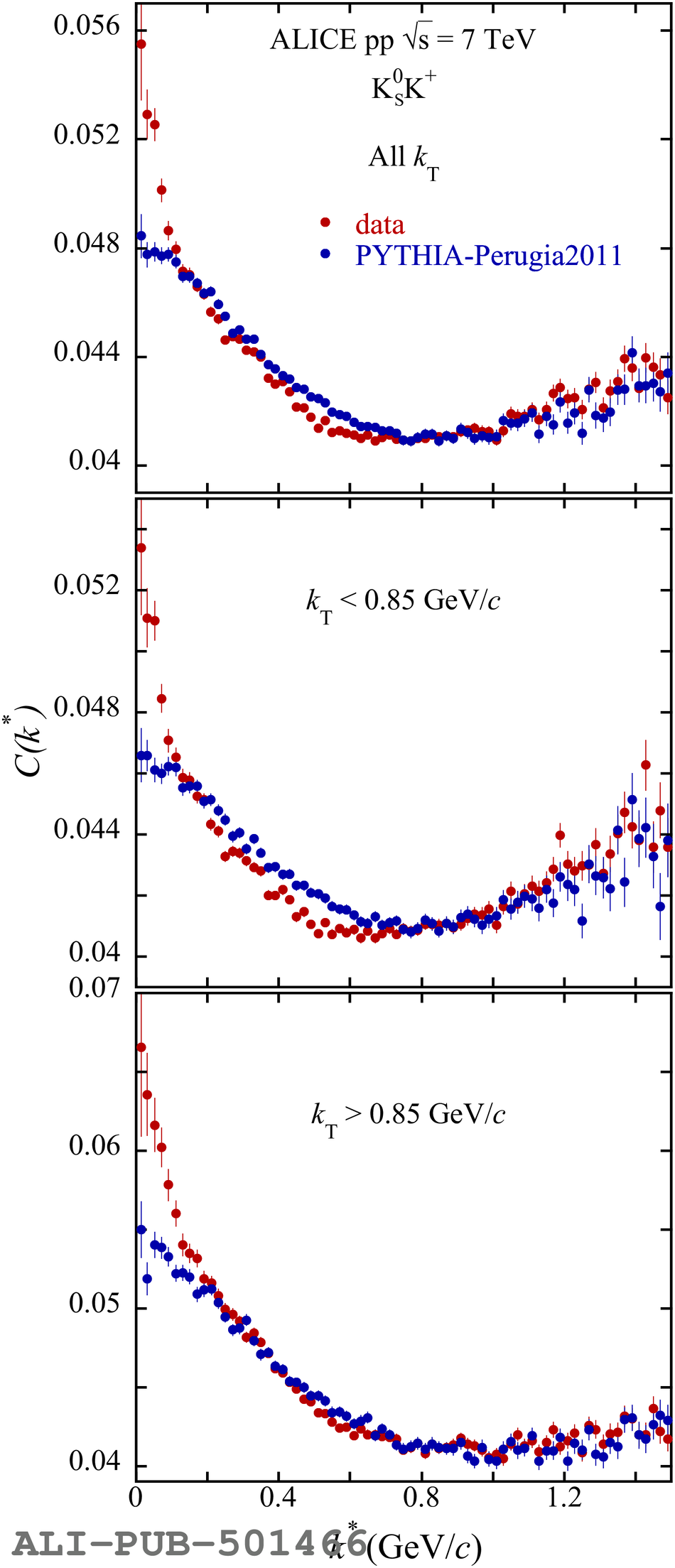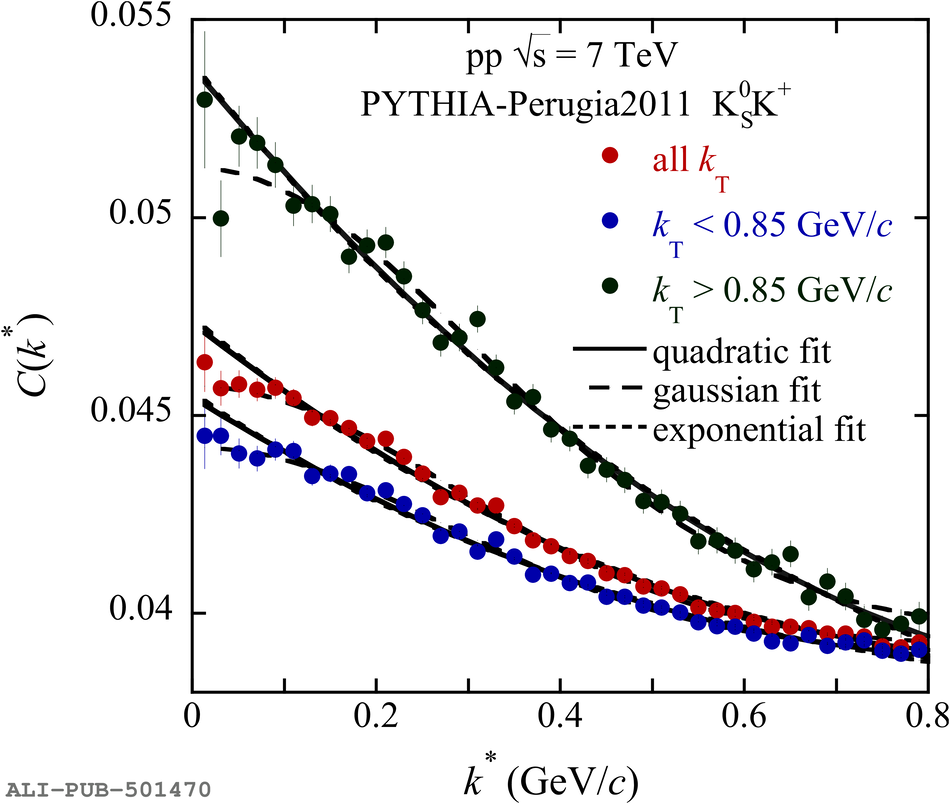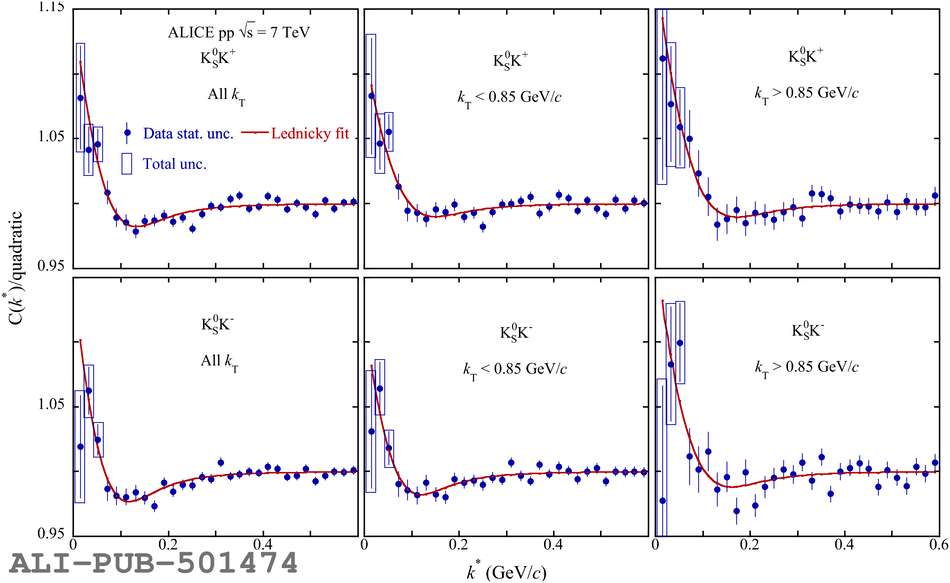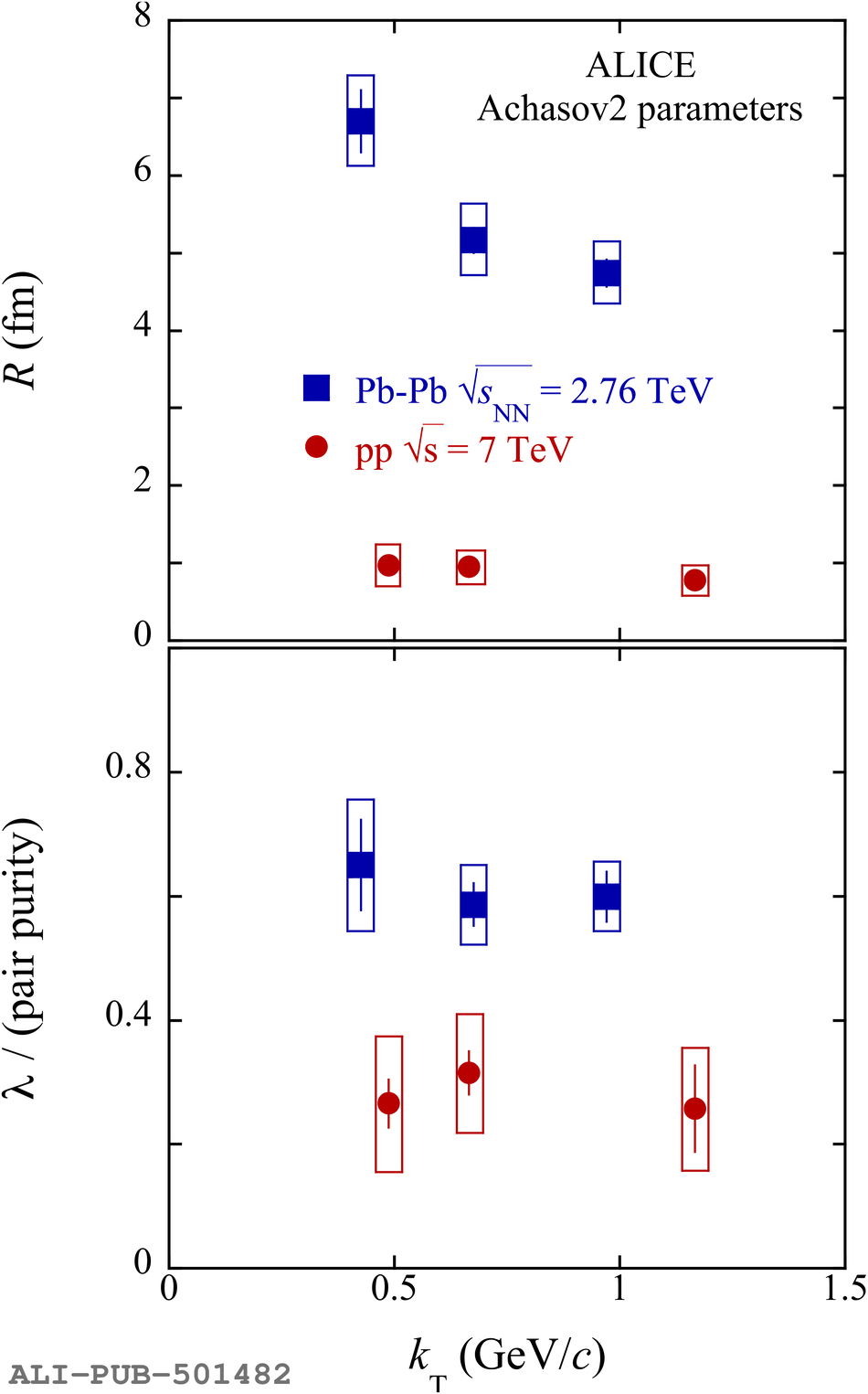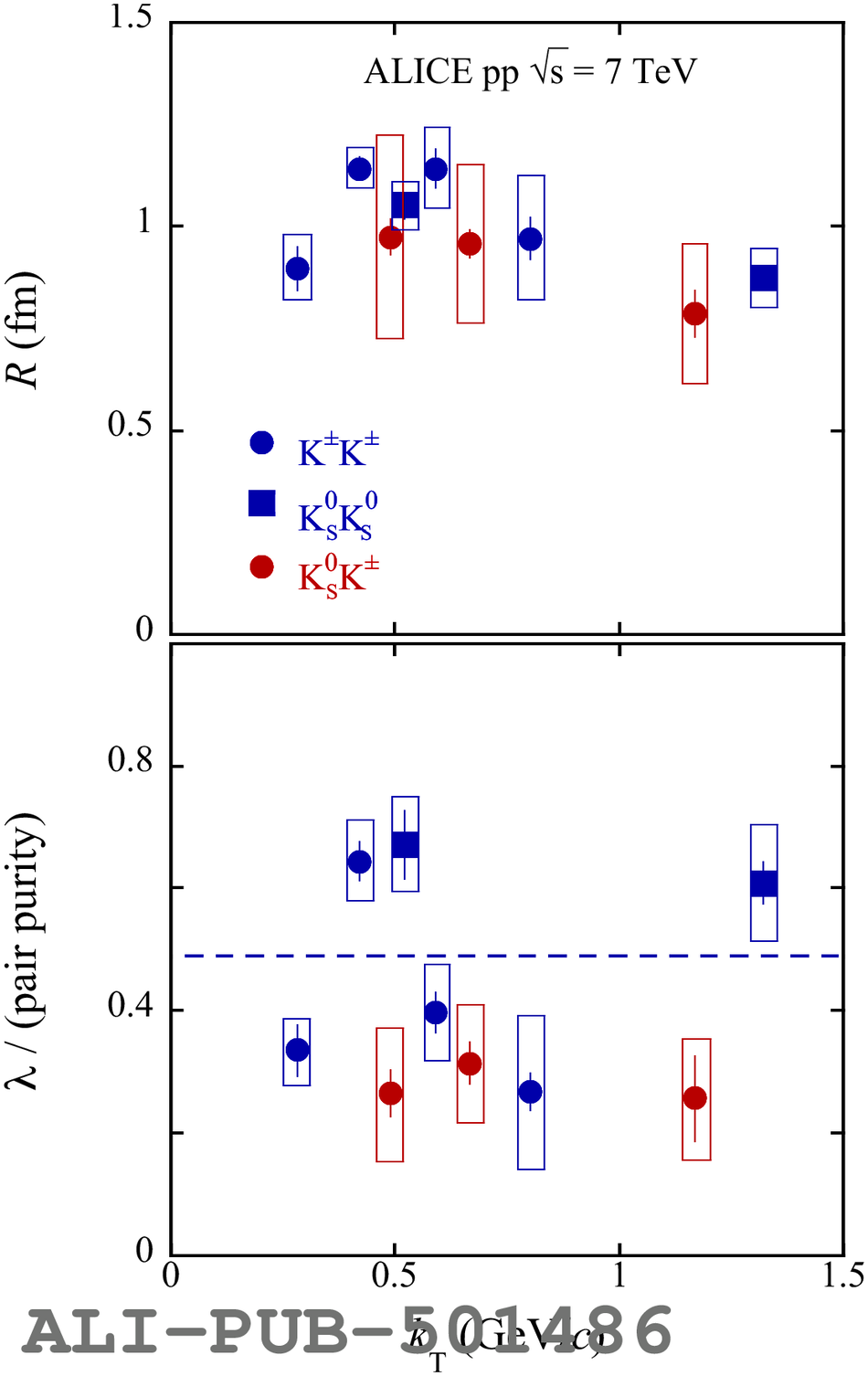We present the first measurements of femtoscopic correlations between the K$^0_{\rm S}$ and K$^{\rm \pm}$ particles in pp collisions at $\sqrt{s}=7$ TeV measured by the ALICE experiment. The observed femtoscopic correlations are consistent with final-state interactions proceeding solely via the $a_0(980)$ resonance. The extracted kaon source radius and correlation strength parameters for K$^0_{\rm S}$K$^{\rm -}$ are found to be equal within the experimental uncertainties to those for K$^0_{\rm S}$K$^{\rm +}$. Results of the present study are compared with those from identical-kaon femtoscopic studies also performed with pp collisions at $\sqrt{s}=7$ TeV by ALICE and with a K$^0_{\rm S}$K$^{\rm \pm}$ measurement in Pb-Pb collisions at $\sqrt{s_{\rm NN}}=2.76$ TeV. Combined with the Pb-Pb results, our pp analysis is found to be compatible with the interpretation of the $a_0(980)$ having a tetraquark structure instead of that of a diquark.
Phys. Lett. B 790 (2019) 22
HEP Data
e-Print: arXiv:1809.07899 | PDF | inSPIRE
CERN-EP-2018-234

